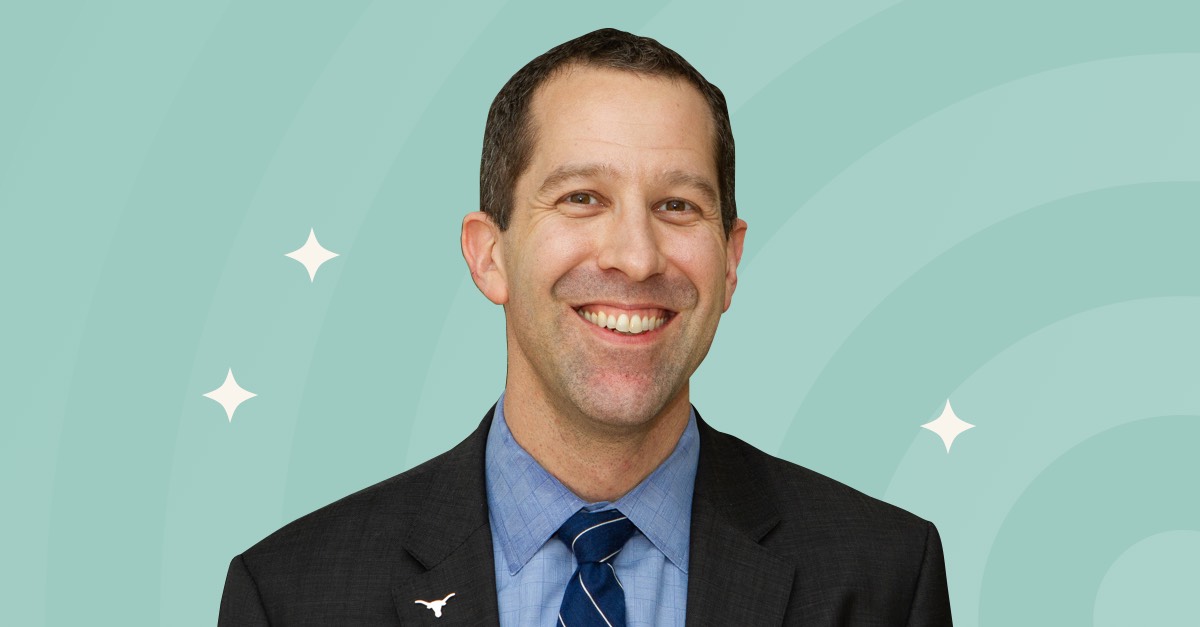Flight Templates are templated flights, or sets of questions, written by some of the world’s preeminent business leaders. With Flight Templates, Balloon users get unparalleled access to seasoned perspectives and proven business strategies across all areas of business, including leadership, product, marketing & sales, innovation, employee experience, culture, and more. This feature is part of a series on The Insight that profiles Balloon’s Flight Template authors.
Like in the sciences, there are areas of business, leadership, and management that are commonly categorized as "hard" (think, data analytics and quantitative goal-setting) and there are those that are called "soft," like qualitative evaluation and culture-building. Too often, the latter are devalued because they are dynamic and difficult to measure, but Dr. Ethan Burris refutes this hierarchy. Throughout his nearly 20-year career, the chair of the Management department at the McCombs School of Business at University of Texas at Austin has concretized the concepts that so many leaders spend their careers failing to grasp.
“As a researcher, I’ve spent my career taking an evidence-based approach to conventionally really fuzzy stuff like leadership, ethics, voice, and things along those lines,” said Burris, who is not only a researcher and department head but also a professor of management at McCombs. “Basically, all the things you’re not supposed to talk about at work.”
More specifically, Burris studies a concept called employee voice. Burris explained that this idea encapsulates everything in an organization that encourages or deters employees to speak up at work. An organization’s degree of employee voice denotes the likelihood that team members will share opinions, ideas, insights, and feedback with both their peers and their higher-ups. It is a reliable predictor of innovation, productivity, and success.
“Outside of academia, I also work directly with managers and executives and teach them how to institutionalize a culture of voice,” Burris said. “Then, not only do people feel comfortable and free and safe to speak up, but those efforts are actually worthwhile. They consistently lead to changes that lead to improvements and innovations.”
The key to ensuring that, once implemented, a culture of voice will effect positive change within an organization is not the likelihood that team members will share their ideas but rather the likelihood that their managers will act on those ideas. During an experiment they ran with the faculty and staff at UT about 10 years ago, Burris and his McCombs colleagues saw firsthand what happens when leaders open avenues through which team members can share feedback and ideas for organizational improvements but fail to follow through on implementation.
“What we found is that when employees speak up with ideas, their motivation, probably more than anything else, is to see some change,” Burris said of the experiment. "They want to change something that they don't have the power to address themselves, so they tell their boss. But if the boss doesn’t act on it, not only does nothing change, the employee is less likely to speak up in the future.”
As a leader, of course, keen discernment is critical; it is not always easy to know which ideas to act on and which to pass up. Burris knows this, so he authored a three-part flight template series on Balloon, Creating a Culture of Voice.
- Evaluate Feedback Mechanisms
- Assess Employee Perception of Voice
- Institute a Culture of Voice
Burris partnered with Balloon not only to help leaders start and facilitate vital conversations about so-called ‘soft’ topics, but also because the platform’s technology, particularly the Balloon Scores, helps leaders evaluate their team’s ideas and act on the ones that are most supported.
“The bias-mitigation mechanisms and decision-making processes that are embedded in Balloon ultimately lead team members to feel safe and give leaders a more democratic way of evaluating those ideas,” Burris said. “But what makes it really different from other platforms I’ve seen try and fail at this same problem is it actually helps push change and implementation of those ideas. If we can get leaders in every industry to start approaching employee voice like this, now we're talking.”
